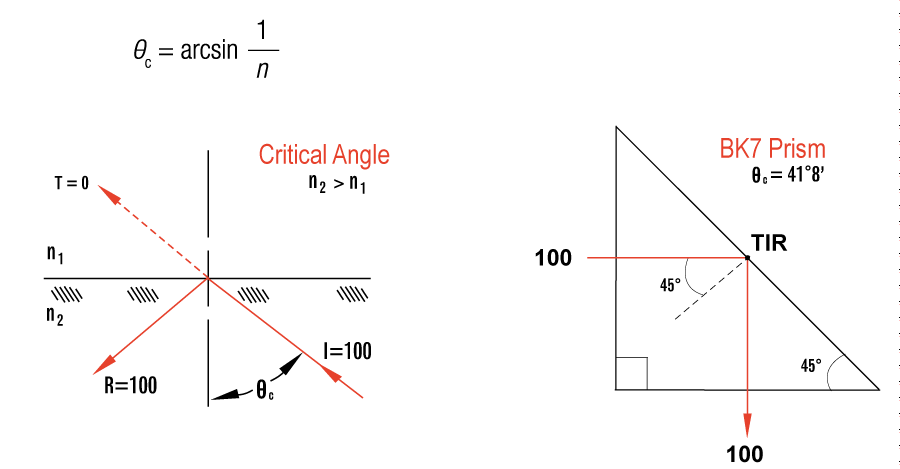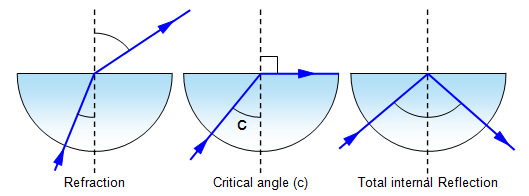

That is, θ c θ c is the incident angle for which θ 2 = 90 ° θ 2 = 90 °. The critical angle θ c θ c for a combination of materials is defined to be the incident angle θ 1 θ 1 that produces an angle of refraction of 90 ° 90 °.

The largest the angle of refraction θ 2 θ 2 can be is 90 ° 90 °, as shown in part (b).

) Now imagine what happens as the incident angle increases. (Since n 1 > n 2, n 1 > n 2, the angle of refraction is greater than the angle of incidence-that is, θ 2 > θ 1. If, as shown in the figure, the index of refraction for the second medium is less than for the first, the ray bends away from the perpendicular. Part of the light crosses the boundary and is refracted the rest is reflected. Interestingly, we can produce total reflection using an aspect of refraction.Ĭonsider what happens when a ray of light strikes the surface between two materials, as shown in Figure 1.14(a). But it would be useful to have a mirror that reflects all of the light that falls on it. Analyze the reason for the sparkle of diamondsĪ good-quality mirror may reflect more than 90 % 90 % of the light that falls on it, absorbing the rest.Describe the workings and uses of optical fibers.Explain the phenomenon of total internal reflection.By the end of this section, you will be able to:


 0 kommentar(er)
0 kommentar(er)
